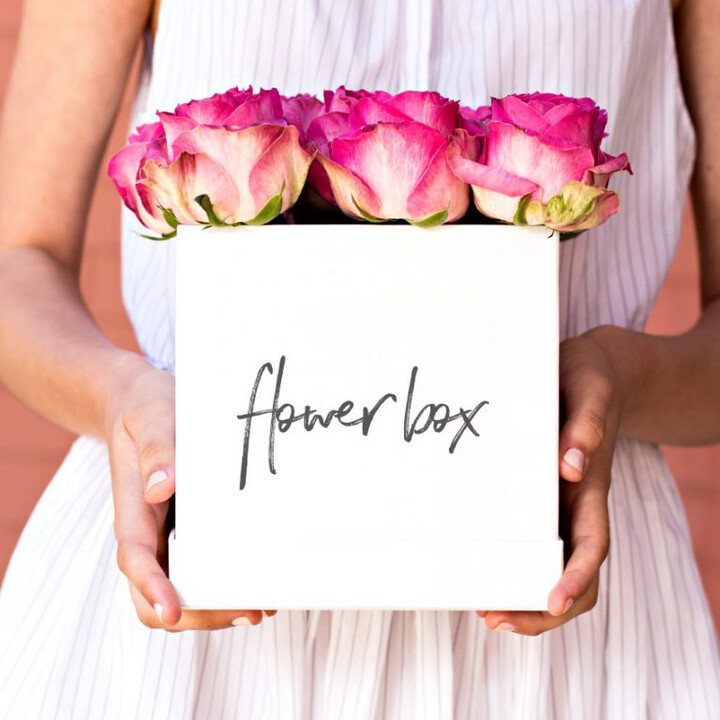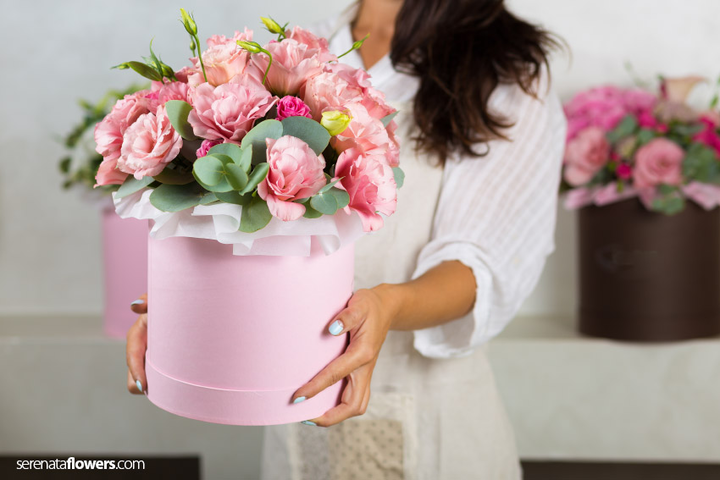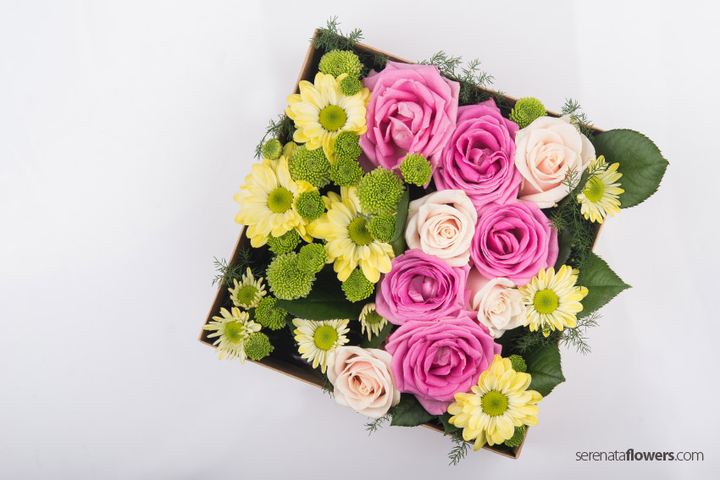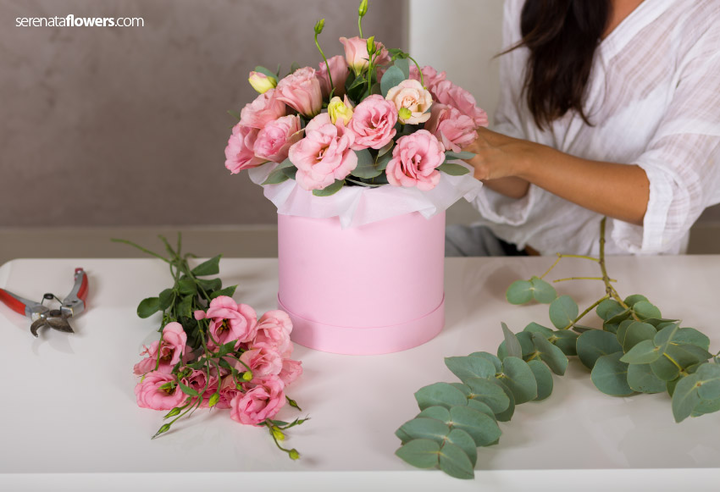
Flower boxes are a great addition to the home as they can instantly add colour and style to both indoor and outdoor spaces.
They give you the opportunity to grow anything from tasty herbs to cascading colourful flowers, but how should you set about arranging them?
How to Arrange your Own Flower Box
When opting to add a flower box to your home or garden, it’s important to choose plants and blooms that thrive in this environment, especially as window boxes are somewhat root confining.
Some of the best flowers for window boxes include:
· Bidens – a pretty yellow perennial with a trailing vine
· Calibracoa – a plant that is easy to maintain as it requires no pruning whatsoever
· Ivy Geranium – available with both white and red flowers, both of which add impact and bold colour to a flower box
· Scaevola ‘New Wonder’ – these eye-catching flowers boast a fan shape and are extremely fast growing
· Bacopa – This specie is perfect for shady areas and comes in either white or lavender varieties
· Petunia Supertunia – another bloom that promises to add vibrant colour to a window box, offering hues such as pastel pink, red, purple, blue and magenta.
Containers for window boxes
When it comes to choosing a vessel for your flower box, there are an abundance of styles and designs to choose from including no-rot PVC window boxes, wooden containers, tapered panel window boxes, lattice styles, fibre-glass window boxes, iron-clad variants and free-standing planters.
It’s important to choose a style that will complement your existing home or garden. You may even wish to make your own flower box. If doing this yourself, choose a container that is the correct size
To add life and colour to your garden, paint window boxes in a variety of hot hues. However, as well as looking good, flower boxes need to function well. It’s therefore important to ensure the material the window box is constructed from is weather tolerant and offers the correct drainage system.
This is especially the case if you wish to fashion the window box yourself
One point to remember when choosing a window box style is the location you live in.
For example, if it rains a great deal, a window box with a protective coating is a must!

What flowers are suitable for a flower box?
When it comes to creating the perfect flower box, there are an abundance of plants and flowers to choose from.
If placing the flower box in a sunny window that gets at least six hours of sunlight per day, opt for bold, bright flowers in complementary colour combinations.
The likes of Sweet Potato Vines, Verbena, Dusty Miller and Calibrachoa all work well. To create a contrasting look, place the flowers against a backdrop of fresh green foliage.
If you wish to decorate a shady window, it’s important to choose shade-loving plants and flowers, including Coleus species such as Dappled Apple, Dark Star, Fern and Dark Heart. Opt for a series of colour combinations and textures, in the shape of deep purples and bright apple green hues.
Not just for flowers…
Asides from growing an array of picture-perfect blooms in your flower box, such containers can also be used to grow herbs or other edible plants. When selecting herbs for a window box, choose species that require the same amount of water. Drought-tolerant Mediterranean herbs are a great option.
Pair the likes of Marjoram, Oregano, Thyme and Rosemary together in one box, and species that require more water, such as Cilantro, Parsley, Chervil and Basil in another box.
Window boxes filled with herbs are often placed indoors on kitchen window sills. This makes these herbs easily accessible when cooking. However, they also do well outdoors as they add colour and texture to the garden, whilst attracting beneficial insects.

One tip to follow when selecting herbs for a window box is to choose variants that don’t grow too tall.
If you intend to grow taller plants in a window box, it’s important to prune them regularly. If not, your window box risks looking unruly or toppling over. Another tip includes giving each plant its own space. Cramming too many herbs into one pot will mean they’ll fight for nutrients.
Having plenty of root room is important and will ensure healthy plants! Finally, choose a good position for your herb box – the majority of herbs require full sunlight, with the exception of mint, which can withstand shady areas.
With this in mind, it’s important to place your window box in the correct environment in order to encourage full growing potential.
Maintain by using a rich, organic slow-release fertiliser and water on a daily basis.
Whatever you do, don’t be afraid to use your herbs. Asides from adding flavour to an abundance of dishes, herbs grown in containers benefit from regular harvesting.
How and where to display a flower box
The majority of flower boxes are displayed in the exterior window of the home.
In order to plant your own flower box, you should first begin by choosing a vessel.
This will need to fit snuggly along the length of your window sill and should match the décor of your home.
·Once you have sourced a container, fill with potting mixture. Before placing this potting mixture into the vessel, add to a bucket with a little water. Once the soil resembles a damp sponge, stir in an organic fertiliser. If you intend to place your flower box in full sunlight, it’s a good idea to add a moisture-retaining polymer to the soil. Before placing into the container, use coffee filters to cover drainage holes and add two thirds of the mixture to your window box.
·The next step requires you to choose the plants you would like to fill your window box with. Before planting them, place them (still in their pots) on the surface of the soil – this will help you to get an idea of what they will look like alongside one and other and also, to determine their positions. Gently empty them out of their pots and begin planting them in the window box, starting at the centre of the container. Using the remainder of your potting mixture, cover the plants roots – the final soil level should be around an inch below the top of the window box.
· To settle the plants into their new home, water lightly or until the drainage holes start to drip.

When to water
You should water your flower box daily, keeping in mind location and rainfall. If you’re unsure of when to water your plants and flowers, check the soil. If it feels dry an inch down, it requires watering.
When considering flower boxes in shady areas, you should water daily during the hot summer months and less throughout the winter months.
Maintenance
To keep your flower box in tip-top condition, and to encourage healthy growth, every two or three weeks add a balanced water-soluble fertiliser to the soil. To promote flowering, cut away any dead blooms.
Maintenance-free flowers and plants
Whether you travel for work or have a busy social calendar to attend to, maintenance-free window boxes are a great idea. When choosing plants for these particular containers, opt for succulents and cacti and plant in a soilless potting mixture.
They enjoy sunlight yet won’t dry out, which means you’ll have to spend less time watering them. This is down to their fleshy leaves, which boast a built-in water supply. Options for a maintenance-free window boxes include Green Aeonium Cousins, Green Rattails, Purple Echevaria Rosettes and Blue Chalksticks. Set these species off against a backdrop of Trailing Ivy.
When it comes to watering these species of plant, simply check the soil every two weeks.
When overly dry, only then should you reach for the watering can.

When to use a flower box
Planter boxes and flower boxes offer a number of advantages over ground planting, including the fact they take up little space.
If you don’t have a garden, adding a variety of flower boxes to a number of the windows in your home is a great way to bring a little of the outdoors inside, whilst adding colour and depth. Alternatively, if your garden receives little light, having an assortment of flower boxes in place will allow you to move the planters as and when needed, permitting them the sun to grow to their full potential.
Similarly, if you wish to spruce up a small balcony, yet have little space to work with, hanging flower boxes on walls, under windows or over the edge of the balcony rail is a great way to introduce colour and texture to an otherwise quiet space.
Benefits of window boxes
A flower box brimming with blooms will bring even the dullest façade to life, introducing an extra dimension, colour and texture to your home. These colourful miniature gardens are not only easy to maintain, but they save space!
If you have created some stunning window boxes of your own, let us know as we’d love to share examples with our readers.